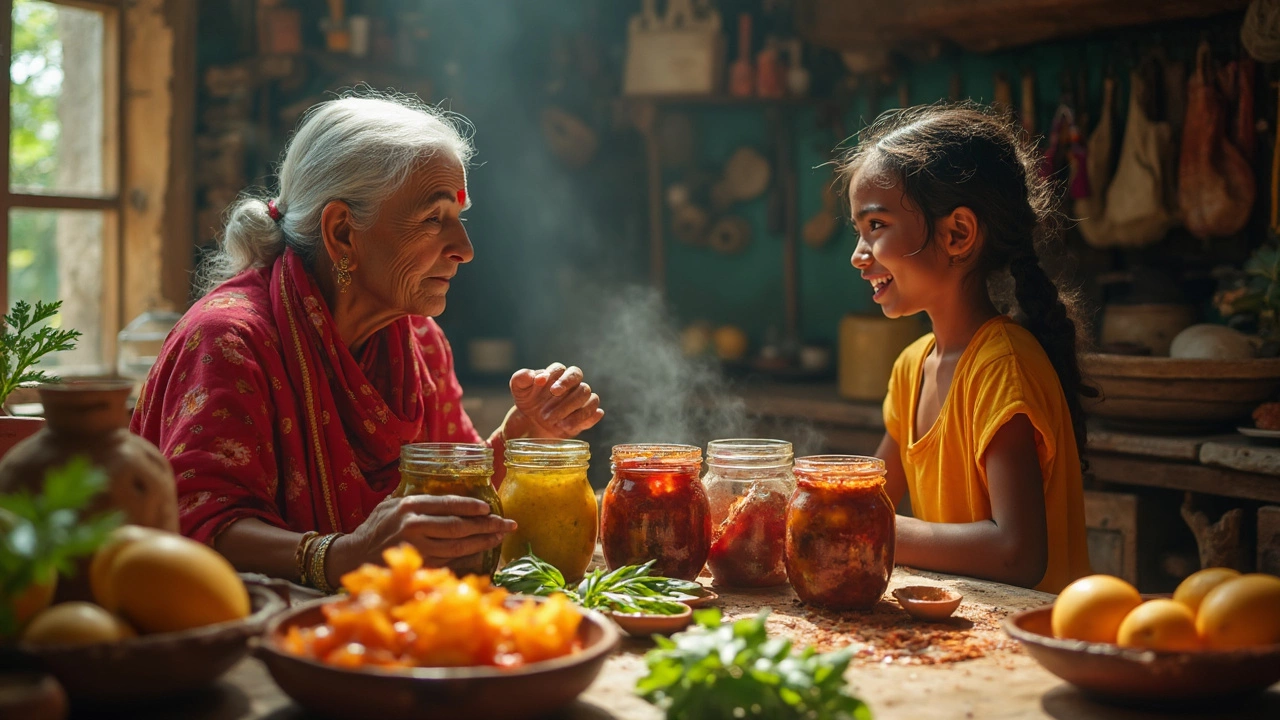Pickle Recipes & Tips – Indian Pickles Explained
When talking about pickle, a preserved mix of vegetables or fruits soaked in spices, oil, and an acidic medium. Also known as achar, it forms a cornerstone of Indian meals. chutney, a fresh condiment made by grinding herbs, spices, and sometimes fruit often sits next to a pickle on the plate, but the two differ in shelf‑life and preparation method. curd, the thickened milk product used in many Indian spreads can act as a starter for quick pickles, while lemon, a natural source of citric acid that speeds up preservation is a favorite acidifier. The whole process leans on fermentation, the biological conversion of sugars into acids and gases by microbes, which gives pickles their signature tang and depth.
Pickles are more than just a side; they act as a flavor bridge between a spicy curry and a bland rice dish. The core ingredients—oil, salt, and a blend of spices like mustard seeds, fenugreek, and chili—create a protective environment for vegetables to stay fresh for weeks or months. This preservation method mirrors the concepts behind Indian chutney, yet the longer storage demands higher acidity and stricter hygiene. For example, a mango pickle uses raw mangoes, mustard oil, and a hefty dose of red chili powder, while a coriander chutney blends fresh cilantro, green chilies, and a splash of lemon juice for immediate consumption. Understanding these distinctions helps you choose the right accompaniment for any meal.
Why Pickles Matter in Indian Cooking
Every Indian household treats pickles as a pantry staple because they provide a burst of heat, sourness, and aroma that can transform a simple dal or roti into a memorable bite. The practice of making pickles dates back centuries, originally a way to extend the shelf‑life of seasonal produce before refrigeration. Over time, regional variations emerged: the North favors mustard oil and whole spices, while the South leans on sesame oil and tamarind. These choices reflect local agriculture and climate, tying the pickle directly to its place of origin. Moreover, the fermentation step introduces probiotics, which can aid digestion—an often‑cited benefit in traditional Indian wisdom.
When you pair a pickle with a dish like biryani or a buttery naan, you balance richness with acidity, much like adding a squeeze of lemon to cut through heaviness. The same principle appears in the post “Why Add Lemon to Biryani?” where lemon brightens flavors and keeps rice fluffy. Likewise, the article “Homemade Chutney Shelf Life” explains how proper storage extends a condiment’s usability, a concern that’s also central to pickle making. By mastering the basics of spice ratios, oil types, and fermentation time, you’ll be able to tweak any pickle recipe to match your taste, whether you like it fiery, sour, or mildly sweet.
The collection below pulls together practical guides that touch every stage of the pickle journey. From choosing the right oil and spice blend, to troubleshooting common issues like soft textures or off‑flavors, you’ll find step‑by‑step tips that fit a beginner’s kitchen as well as a seasoned cook’s pantry. Look for posts that dive into specific vegetables, fruit bases, and regional styles, so you can start experimenting right away. Ready to explore? Scroll down and discover the full range of pickle‑related articles we’ve curated for you.

Is Pickle a Chutney? Clearing Up the Confusion
People often mix up pickles and chutneys, but they're not the same thing. This article breaks down what sets them apart and explores where the confusion comes from. You'll get clear tips on how to tell the difference at home, plus quick facts that might surprise you. Perfect if you love Indian food or are just curious about condiments. Get ready for some useful kitchen insights.